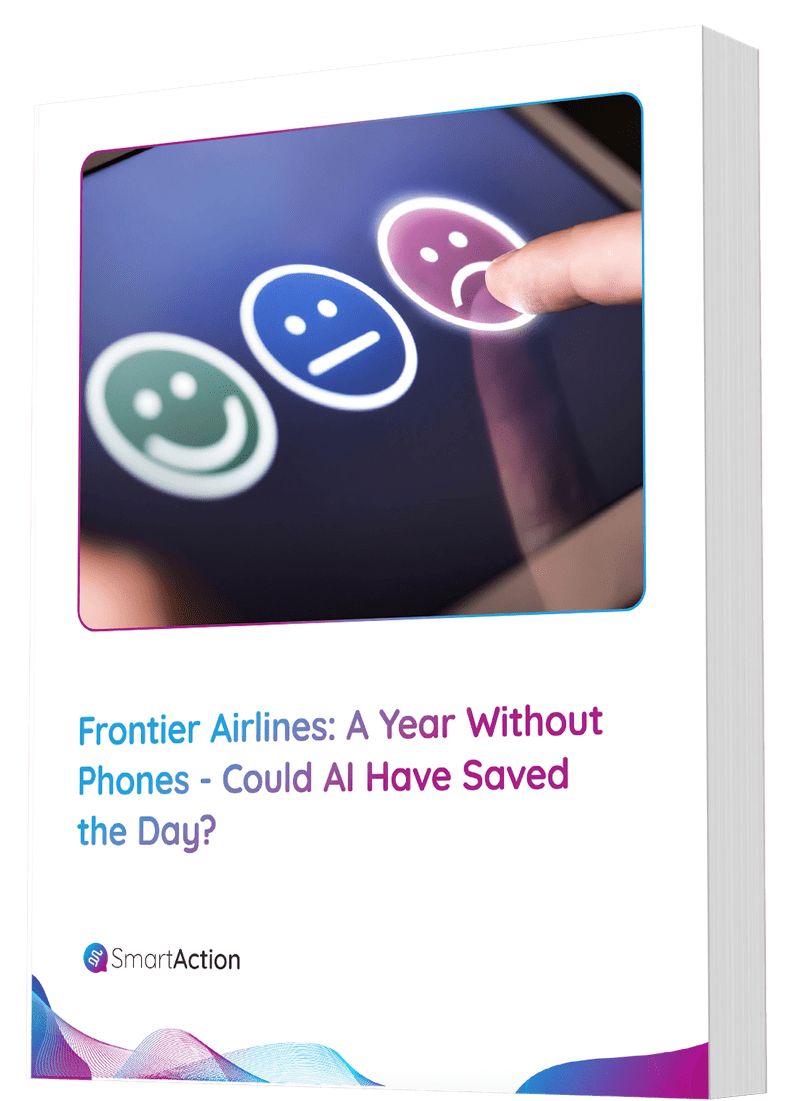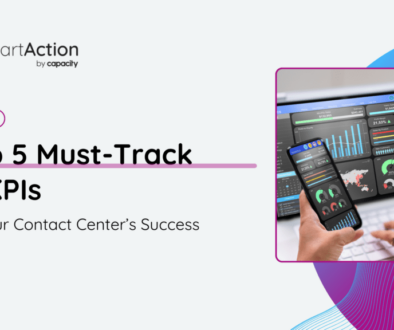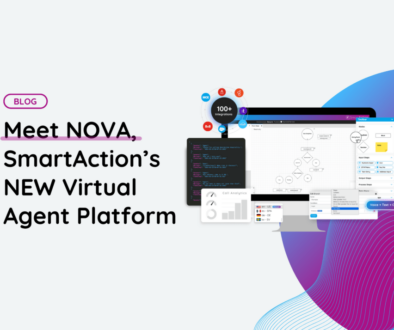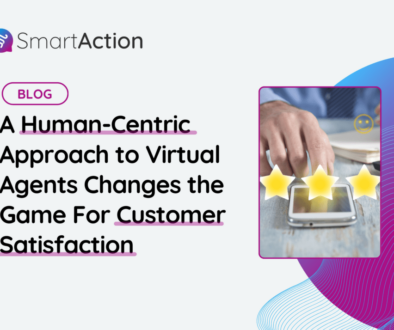CrmXchange Grills SmartAction on Top 10 Conversational AI Questions
The editorial team at CrmXchange sat down with our own Brian Morin to dive into the top 10 questions their readers ask about deploying stellar experiences with conversational AI over voice.
Please provide a brief overview of SmartAction’s conversational AI.
At a 50,000 ft level, the best way to think of us is having all skills to mimic live agent behavior minus complex critical thinking skills or judgement that you can only get from a human. This means having the ability to engage conversations in natural language, the ability to understand full sentences, ability to read and record data much like a human and even sound like a human. Our virtual agents consistently outperform live agents on CSAT scores simply because they just need to be trained once to deliver a perfectly trained agent experience.
What are the types of applications/calls that make the best use of AI self-service?
Invariably these calls (or chats) are transactional in nature. They are the high volume, repetitive interactions that your live agents deem a nuisance because they really aren’t doing any interesting problem solving but merely following a call flow, gathering information, then taking some sort of action. The actual use cases can be all over the map. Here’s a few examples we support, so you can understand how diverged they can be: (1) natural language greeting + intent capture + authentication + routing (2) reservations (3) emergency roadside assistance (4) order management (5) scheduling appointments (6) account management (7) collections, etc. If it involves asking questions, gathering information then taking action or passing to a live agent to finish the call, it’s perfect for automation.
When considering AI-powered self-service, what are the minimum number of interactions a company should have?
To get started on your automation journey, we advise 12,000 calls or chat conversations a month as the threshold for change to see a really good ROI. If you don’t think a virtual agent can contain at least 25,000 minutes/month, it may not be worth the cost and effort to build a conversational AI solution and maintain over time.
When preparing your organization for AI powered- self-service, what are the main questions that companies need to ask themselves?
The first decision is whether you want to buy a DIY platform with a drag-and-drop UI and build on your own, or outsource your AI-powered CX to a partner and have them work as an extension of your team. If all you plan to build is a chatbot and nothing else, you’re likely okay to go down the DIY route. But if you plan to take an omnichannel strategy that involves voice, we think you’ll find a far better customer experience and bottom line savings by outsourcing. Doing voice well is enormously complex. And by the time you’ve added headcount to your internal team, it’s already costing you more than outsourcing to experts who have done this before.
Complex calls are traditionally handled by agents. Do you have an example where complex conversational AI was deployed?
A good example is AAA. They’re a top 25 most trusted brand who handed their most precious CX – emergency roadside assistance – over to AI. That’s a pretty big leap for a company who built their reputation on the gold standard of customer service from live agents. There’s a lot of complexity involved here:
- authenticating the customer and looking up data to ensure they qualify for a tow
- capturing intent of what’s wrong in natural language
- capturing make/model/year/color of the vehicle they’re driving
- identifying their location through GPS
- finding the nearest tow truck or service for the necessary intent since they can be different
- calling and dispatching the driver
- checking back with the stranded motorist on ETA
- identifying completion of service
- submitting a closed case to their CRM with all relevant information
With access to customer data, can AI “agents” predict why a customer is calling?
Yes. We do this a lot with retailers we support. When customers call in, often times it is related to an order they recently placed. If we identify a recent order from their ANI lookup or after we authenticate, we will pre-empt the typical greeting with, “Are you call about your recent order on XX?” If yes, we can skip all the unnecessary friction and ask a question in natural language on what they need help with.
What are best practices that companies need to keep in mind about the cleanliness of their data before embarking on an AI-powered initiative?
This is paramount. Data is fuel for AI. If the data is bad, AI will struggle to give the experience you would like to give. For instance, if you authenticate using phone number but much of that data is wrong, you are not going to get enough customers into your self-service application. You will end up with too many business rule transfers to live agents. The good news is that you can use AI to capture any missing data while you have then on the phone.
How important is it for self-service agents and live agent options to be totally integrated into an omnichannel seamless experience across channels?
We’ve never done an integration without this. Virtual agents will rarely contain 100% of all callers for every use case. There are often good reasons for live agent transfers. In the case of AAA mentioned above, if the motorist already has had 3 tows in the last 12 months, they don’t qualify to continue in self-service. They are transferred to live agents where they can upsell the motorist. In the case of payments, sometimes the individual calling in isn’t authorized on the account to make a payment. They need to be transferred to a live agent. We don’t design CX for any client that doesn’t allow an easy transfer to live agents for any reason at any time. They just have to say “operator,” “representative,” or anything of the sort. Even if we hear “I want to talk to,” we make an immediate transfer. Customers should never be trapped in automation for any reason. But if the option is to wait on hold, customers will invariably attempt self-service. After a good experience, they will gladly repeat.
When building an AI-powered self-service roadmap, who do you suggest be involved from the organization?
This generally starts with contact center decision makers then broadens to the IT group. When we study the nature of interactions, we get actual customer service representatives involved. This means understanding scripts, listening to calls, and dissecting everything they do when handling any give call type or chat. Sometimes not every path in a given call type or chat is perfect for automation, but there’s often times a “happy path” perfect for automation and the exclusions get transferred to live agents.
How does SmartAction make it ‘less hard’ for your client’s customers to have conversations with machines?
Doing conversational AI over voice and doing it well is enormously complex. It involves much more than people assume – machine learning, building out language models, customizing and weighting the acoustics to grammars on every single question we ask so we can match what we think we heard against what we know what we’re listening for to get the best speech rec possible, CX design expertise for conversation flows, QA, A/B testing, daily monitoring and reporting so we’re constantly tuning the application and iterating over time to chase the most frictionless experience possible. We make life less hard for clients by bundling our turn-key conversational AI stack with robust end-to-end CX services that I just mentioned and make it available as a flat per-min fee based on usage. This way customers know exactly what they’re paying for. No surprises. Clear ROI. And they get a best-of-breed partner doing all the heavy lifting for them. We’re able to draw from a deep well of experience that comes from operating the AI-powered CX for more than 100 brands whose reviews have us rated as top-rated solution on Gartner Peer Insights (4.8/5).
To see what a great experience should sound like, visit Hearing Is Believing for OnDemand demos of real customer interactions with IVA or take a look at this short video below from 7 different customers.






